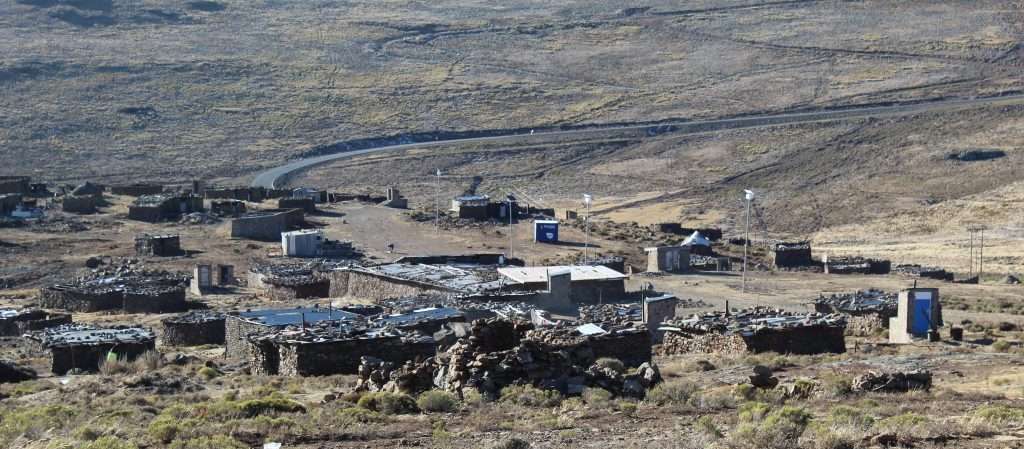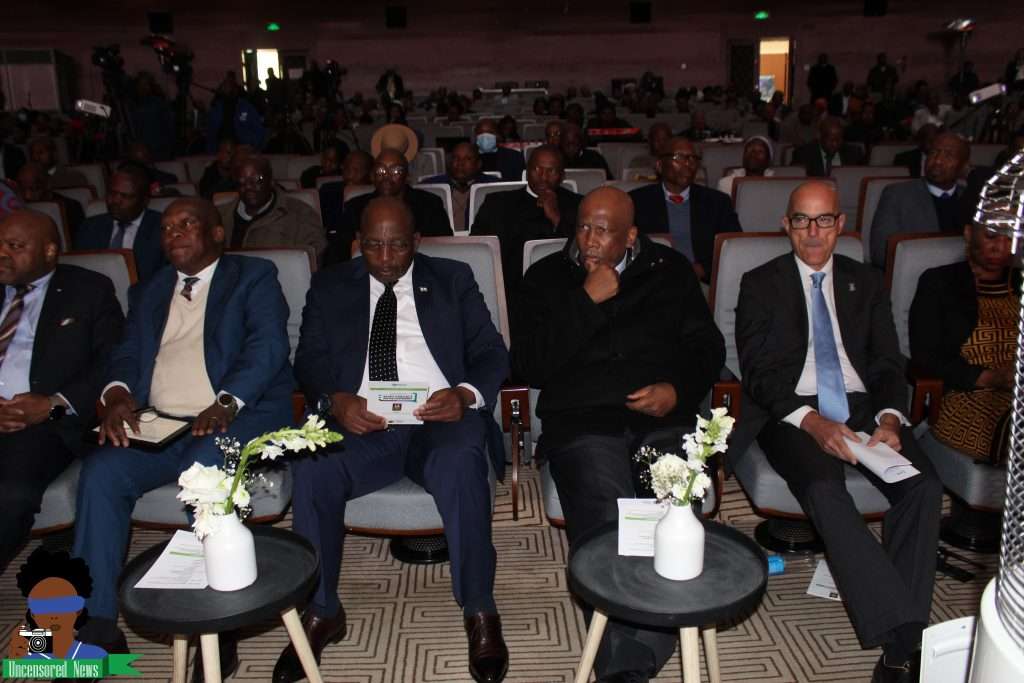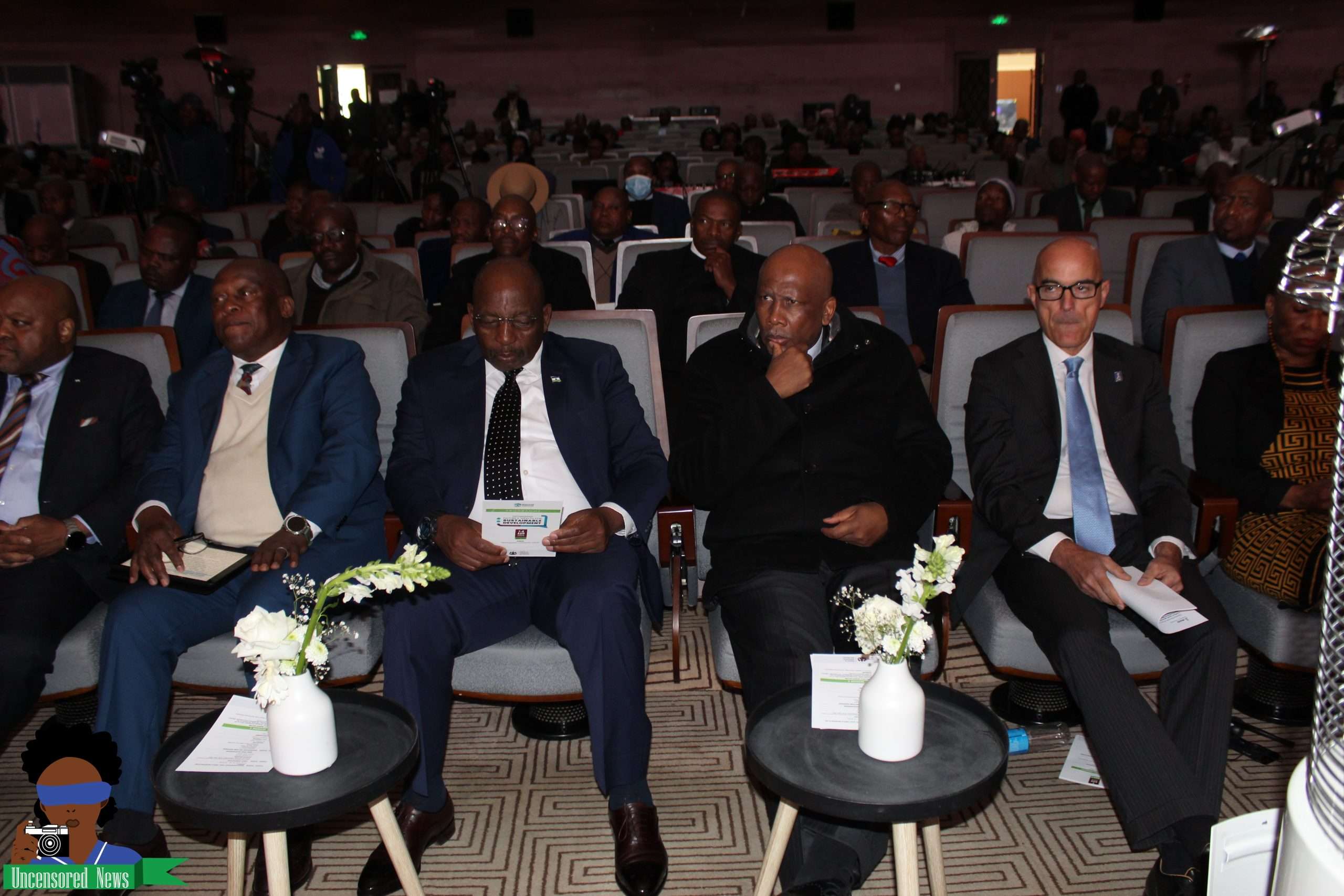One Million Basotho Face Poverty Crisis, Vulnerability Report Shows
14 August 2024 by Pascalinah Kabi
Est. Read Time: 5m 49s
Listen to this article:

It is approximately 10:40 a.m. on July 16, 2024. 50-year-old Tsotang Tsibela last ate malebota—papa fried with cooking oil and salt—on July 14, 2024, and does not know where his next meal will come from.
To afford a pint of maize meal, Tsibela collects firewood to sell for M20 ($1.10) to his working neighbours in Phuthalichaba, Mokhotlong. Originally from Qeme in Maseru, the capital of Lesotho, Tsibela moved to Mokhotlong in 2014 to seek employment at the Letšeng Diamonds Mine.
“My sister, life is difficult,” Tsibela told Uncensored News. “It’s so hard that I often have to buy a pint of maize meal on credit.”
Tsibela is among many men and women who have left their homes across all ten districts of Lesotho in search of work at the mines in Mokhotlong and Botha-Bothe districts. Despite not having a job, he also must worry about a M100 ($5.48) monthly rent for his accommodation in the Phuthalichaba village.
Tsibela shared his story while sitting in a group of six men and one woman, all cramped into a small one-room house made of stones and mud in Phuthalichaba village.
The room, filled with smoke from a traditional, handmade, portable camp stove used for cooking and heating the room, is owned by host Matšokolo Molefe. Molefe makes a living by selling traditional beer to her neighbours.
The men—Tsibela, Mohlolo Sekese, Sekhae Pokoane, Mokete Phosa, Topollo Ramakatsa, and Tellang Raise—and female host Molefe, sit on wooden benches as they discuss their struggles with hunger and poverty.
“I came here in 2010. To be able to eat, we collect firewood, cow dung, or indigenous vegetables to sell to those who can afford them so we can also have something to eat,” Phosa, from Matsoku in Mokhotlong, said.
The 48-year-old added, “We came here near the mine looking for employment, but sometimes we spend the whole year without work. When one of us does get employed, it’s often only for about two weeks, which is why we struggle to make ends meet.”
49.7 poverty line
Tsibela, Sekese, Pokoane, Phosa, Ramakatsa, Raise and Molefe are waiting for their names to be called for temporary employment at four large mines operating in Mokhotlong and Botha-Bothe.
The waiting can be long—weeks, months, and even years. They are constantly afraid to return to their homes in their respective districts because if their names are called while they are absent, it would be a missed chance of a lifetime.
As they endure this uncertainty, the Lesotho government has published a report revealing that at least one million Basotho live in poverty, struggling daily to meet basic needs like buying food.
“Lesotho’s socio-economic context presents challenges, with a population of 2.077 million and a poverty rate (of) 49.7 percent,” read the report.
Simply put, nearly half of Lesotho’s population is poor, totalling approximately 1,032,269 people.
The report, 2024 Lesotho Vulnerability Assessment published in August 2024, further revealed that most households in Lesotho were significantly affected by several key shocks.
It indicated that these shocks include rising food prices in the markets, poor crop yields, loss of employment or reduced salaries, and natural hazards such as floods and droughts.
“Among these, the increase in food prices emerged as the most severe shock following the drought shock, making it difficult for households to afford both food and non-food essentials, thereby threatening their survival capacity.
These major shocks are expected to negatively impact all the pillars of food security, making it challenging for households to meet their daily food requirements and maintain a normal standard of living. This information paints a clear picture of poverty level in Lesotho.
Fragile buying power
The report states that the cost of living in Lesotho has gone up. For a family of four in 2024, they need to spend about M3,387 ($186) each month just to cover their basic needs.
Also, a study shows that 19 percent of households do not have enough food to eat, and this problem is even worse for families where someone is HIV positive. This, along with chronic illness and job losses, contributes to high food insecurity in Lesotho.
“Socioeconomic shocks, including job losses, reduced opportunities in on-farm and casual labour, price hikes, and high inflation, have significantly reduced household incomes (have) further weakened their already fragile purchasing power,” read the report.
This situation is all too familiar to Tsibela, Sekese, Pokoane, Phosa, Ramakatsa, Raise, and Molefe, who are part of the 49.7 percent living in poverty. They told Uncensored News they are hopeful that they will one day obtain full-time non-skilled employment at one of the four leading mines in Lesotho.

Their hopes for a better future are set against a backdrop of widespread hardship, as highlighted on June 12, 2024, when Prime Minister Samuel Matekane announced a state of food insecurity, revealing that 700,000 people were food insecure. To address this crisis, the government needs M1.2 billion ($66.3 million).
“The government of Lesotho has set aside M200 million ($110,279) to assist families suffering from hunger,” Matekane said.
This assistance, he explained, will come in the form of community improvement projects and poverty alleviation initiatives, including “Tsoha U Iketsetse” and “Lesupa Tsela” to provide sustainable solutions.
In addition to these initiatives, Matekane recently informed the High Court of Lesotho that a government decision to subsidise food would be determined by the publication of the Lesotho Vulnerability Assessment Report.
“As stated earlier again, it is only after the issuance of the report that the government can elect to subsidise, declare a state of emergency, or give food parcels depending on the situation that is backed by the report.
“The position is clear, therefore, that before the said process, the government cannot make any decision regarding either subsidising maize meal or declaring a state of emergency. It has to make an informed decision based on empirical evidence.”
He made these assertions after Christian Advocates and Ambassadors Association asked the court to order Matekane’s administration to subsidise food following the soaring cost of living in Lesotho.
In his answering affidavit, as reported by Newsday, Matekane argued, “It is denied that there is a right to food.”
A local non-governmental organisation, Section 2, responded by expressing that Matekane’s denial of the linkage between food insecurity and the right to life is legally fault, and morally indefensible.
“It is deeply embarrassing that the government has taken such a position. Government that truly respects itself and its people would not undermine their fundamental rights in this manner,” said Section 2.
DMA on the alert
In the year 2024/25, about 700 000 people in Lesotho do not have enough food. The problem has gotten worse by 20 percent as compared to 2023/24.
To help all these people, the Lesotho Vulnerability Assessment Report indicated that the country needs 59,549 metric tonnes of staple food, which is much more than the 30,314 metric tonnes needed last year. The cost to help everyone would be M1,149,302,744 ($63.4 million), a huge increase from M394 million ($21.8 million) in 2023.
The report further indicated that people would need help for about 4 months. Each family in rural areas will need about M1,509 ($83), and each family in urban areas will need about M1,828 ($101) to cover their food needs during this time.
Given the rising hunger, the Lesotho Vulnerability Assessment Report recommends that the Disaster Management Authority (DMA) enhance early warning systems and other tools to prevent food crises.
“One effective strategy is to increase and improve the use of real-time monitoring of food crisis risk factors in early warning and early action systems.
“Real-time monitoring includes production related information, climate data, price information, and other factors to assess the likelihood of acute food insecurity, enabling policymakers to implement timely responses,” read the report.
The key risk factors to monitor in the projected period specifically include prices for staple food and agricultural inputs, seasonal rainfall performance, water levels from main water reservoirs and rivers, and livestock and human disease outbreaks.
“To maintain effective early warning, the approach will utilise monthly price monitoring conducted by the Bureau of Statistics (BOS), short- and long-term forecasts from the Lesotho Meteorological Services (LMS), and reports from the Department of Water Affairs.”


